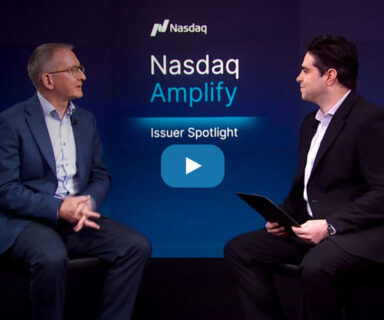
The landscape of B2B tech marketing is rapidly evolving, driven by significant shifts in how buyers engage with businesses. The most significant of these shifts are the elimination of third-party cookies, changes to email regulations and the growing adoption of AI – all of which require organizations to rethink traditional marketing strategies. In tandem, buyers’ preferences towards vendor engagement are evolving. For example, in a recent survey of tech buyers, we found that 65% of buyers want vendors that truly understand their needs. Here we’ll explore these shifts, the impact they’re having on tech buyers and businesses and how B2B tech businesses can adjust their strategies to effectively reach their target audience.
1. B2B tech marketing in a post-cookie era
Google’s decision to eliminate the use of third-party cookies on Google Chrome has profound implications for marketers. Given that 64% of buyers use Google Chrome worldwide, the change will severely limit the tracking of ad data for a large part of any business’s target audience. Worse, since many marketers rely on third-party cookies as a source of buyer intent signals, the quality of intent signals from branding and display ads will plummet as well. Despite knowing about this change for years, many businesses continue to rely heavily on cookies for tracking and targeting. In a survey from Adobe, 16% of marketers believe the end of third-party cookies will “devastate” their business and 23% anticipate significant harm. Buyers, on the other hand, are optimistic about the change, seeing it as an opportunity for more meaningful and relevant interactions with businesses.
While many marketers are concerned, the demise of cookies actually presents an opportunity to drive better quality interactions and turn to more powerful signals of purchase intent. Marketing should focus on creating and capturing more buyer interactions to find quality intent signals. By focusing on driving direct buyer engagement through personalized content – content tailored to what a buyer wants and needs – marketing teams can drive more buyer engagement, and through it, gather more buyer information. To reach more buyers, teams should ensure content is on their owned channels and on networks where buyers conduct their research. For example, if a buyer downloads your content that is distributed on another network (such as TechTarget), that’s a stronger intent signal than cookie data. Marketers can see what a prospect is interested in and researching at all levels of the buying cycle in real time, rather than account-level only impressions that may not be tailored to what buyers are acting on. By increasing usage of more reliable first party intent or prospect-level intent, like that from TechTarget, teams can provide deeper buyer insights than cookie tracking ever could. This is a great opportunity to adapt and harvest quality intent data from both the account and prospect level.
2. Email spam limitations in B2B tech
Gmail and Yahoo’s implementation of stricter standards for email senders, such as a clear spam rate threshold and one click unsubscribe requirement, is forcing vendors to rethink their email strategies. Much like the shift away from cookies, buyers generally welcome these changes, as they result in fewer unsolicited emails and a better overall email experience. This is something all businesses should take seriously, as getting flagged as spam will impact future email performance. One solution for marketers is to focus on improving the quality of emails by providing greater value to buyers in each send. By offering relevant content, such as case studies, data or research, businesses can improve the effectiveness of their email campaigns and minimize the chances of being flagged as spam. On the tactical side, marketers should work with their marketing operations team to make sure all technical requirements (authentication systems, one-click unsubscribe buttons, etc.) are set up correctly. These requirements extend to any partners a company works with, particularly those that are providing leads, so teams should confirm their partners are also fully compliant and aligned to these requirements. For example, any leads that TechTarget provides to its customers are always opted-in and fully GDPR compliant.
3. GenAI in B2B tech marketing: hype vs. reality
The generative (GenAI) revolution has arrived in full force over the past year, and many are eager to implement AI into their day-to-day workflows. We have seen a 909% increaseon the TechTarget network. Despite this enthusiasm, tech companies and buyers alike are still investigating how GenAI will actually help with their “jobs to be done.” Within businesses, many leaders view GenAI as a tool to improve efficiency and save costs. Many marketers are looking to leverage AI to generate ideas and content, as well as other process improvements. On the other side, many buyers are skeptical of what benefits GenAI can offer them. In our latest survey of tech buyers, only 11% of buyers said that ChatGPT is going to help them with purchase research. And 91% prefer information from trusted experts versus content that may have been authored by generative AI. While GenAI holds promise for improving efficiency, many businesses are struggling to integrate it into their strategies, while also being mindful of buyers’ preferences. This does not mean GenAI should be thrown away – rather a revised approach is required. In our own practice and in working with our customers, we’ve found that a human-assisted GenAI approach – combining the efficiency of GenAI with the personalization and quality of human input – is one way to ensure early success with GenAI. For example, Priority Engine’s GenAI-powered messaging feature, IntentMail, can generate personalized, relevant email copy for your teams to leverage. With IntentMail, sellers can create highly personalized business-relevant email messaging with a GenAI engine trained using TechTarget’s proprietary opt-in intent data. All a seller needs to do is tweak one or two things before deploying the email to make it even more personalized for their business.
Place buyers at the center of your strategy
These changes in buyer engagement require a shift in marketing strategies if B2B tech businesses are to continue to see revenue growth this year and beyond. By adapting to these changes and focusing on direct engagement, value-driven email campaigns and a human-assisted AI approach, teams will drive more effective buyer engagement now and lay a strong foundation for the future.
For more insights and recommendations, watch Closing the Gap: How to Engage Buyers and Empower Vendors for the Future.




